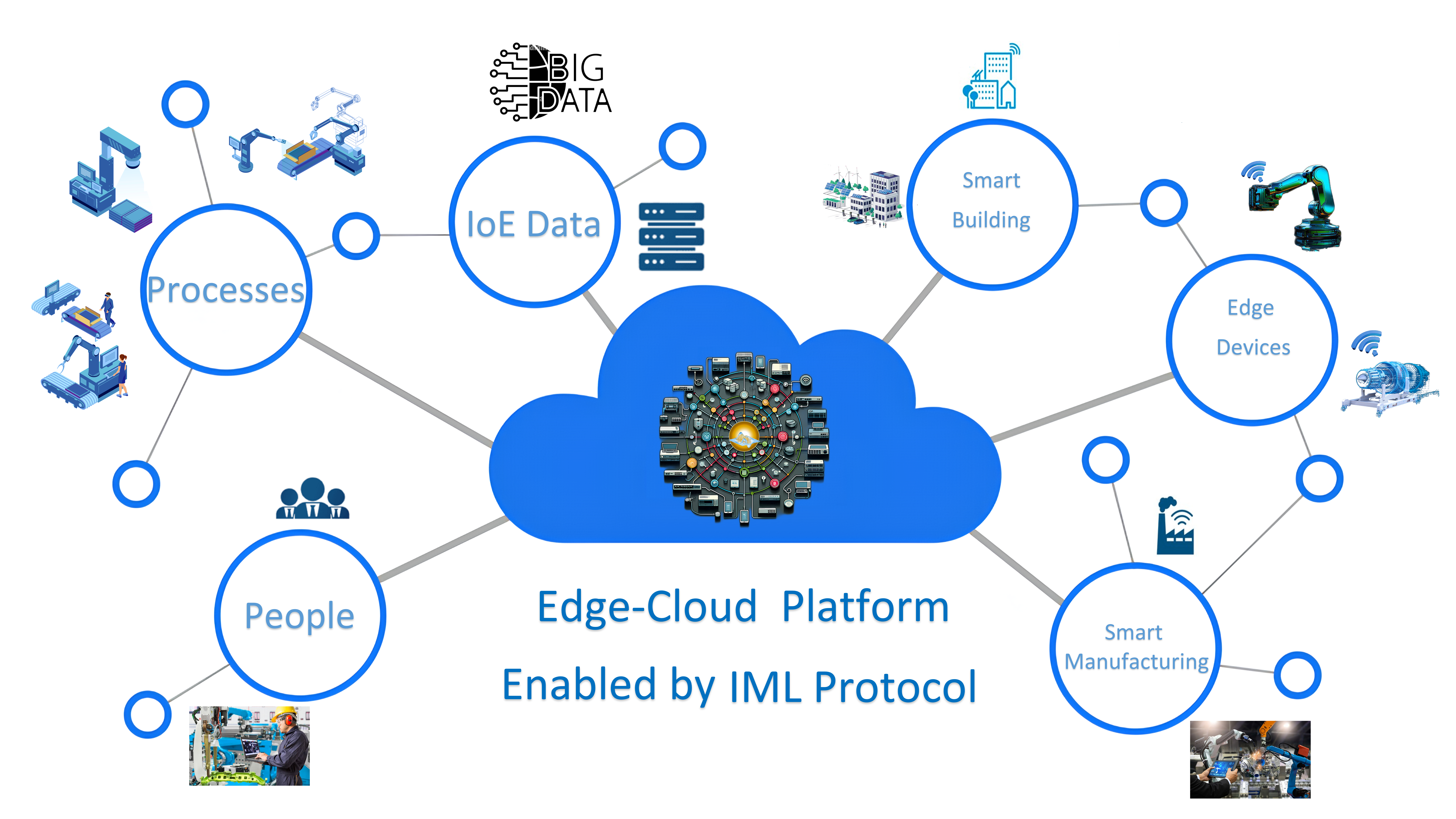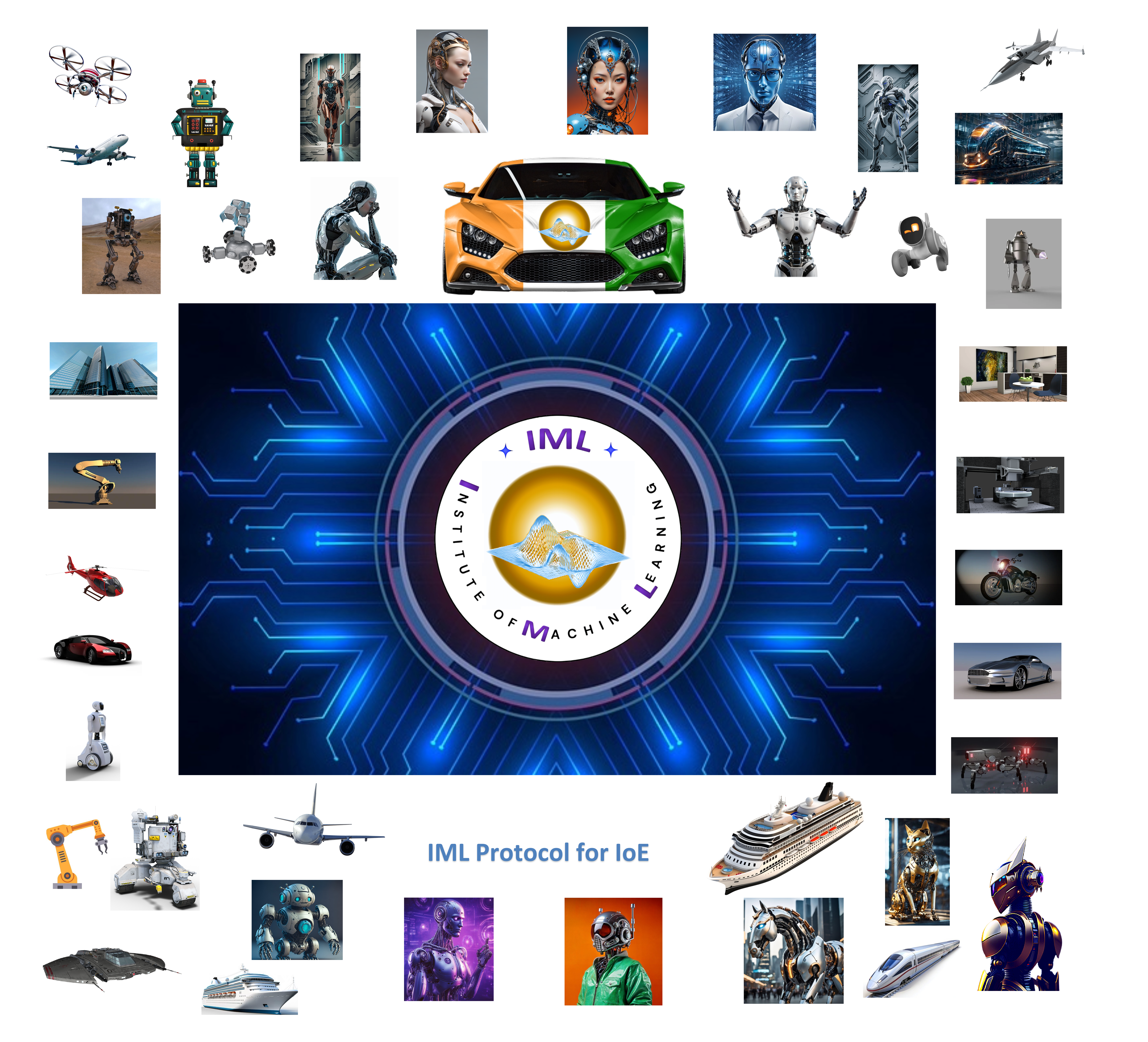IML Protocol is an internet (TCP/IP) based technology that reliably connects edge devices (with lightweight AI models), cloud servers (data centre with big AI models) and remote users/operators (with lightweight AI models) with low latency suitable for continuously transmitting encoded and compressed data in real-time with bandwidth saved for guaranteed delivery, which forms the foundation and network of connections between people, things, data, and processes that provide general intelligence and improved cognition across the networked environment. It is an edge-cloud platform dedicated for better communicating and controlling IoE (Internet of Everything) data across the IT infrastructures within organisations or IoE applications such as smart building and smart manufacturing. The technology allows the data-driven intelligent systems (integrated with other technologies such as 4G/5G, big data, AI and edge and cloud computing) to enhance the capabilities of the participating entities and bring in network intelligence to facilitate smarter-decision making and better data exchange with enhanced security by utilising TLS (transport layer security) handshake as an encryption protocol with optimised overheads that provides secure and efficient bidirectional communications to support massive connections across the platform for implementing digital transformations of Industry 4.0/5.0.

Using the IML Protocol developed to enable real-time communications over the edge-cloud platform, all machines, people and processes can be connected and data remotely collected offers new deep insights of production processes, which have become more efficient, autonomous and adaptive particularly by using AI and big data analytics over the network of interconnected devices equipped with sensors and software to interact with the environment. With more sensors installed, the available data sources can provide the real-time monitoring and diagnostics of machines, systems, structures and processes, and automatically optimising their performance, thus making the systems more intelligent.

With 4G/5G mobile network that can ensure real-time data communication independent of Wi-Fi availability, all devices can be connected over the IoT networks by two-way communication with IML Protocol, to allow a global vision and report any anomaly as well as remote sensing, monitoring and controlling.

The real-time communications would also allow AI to be placed at both the edge and cloud of the network and deployed on different resource constrained hardware architectures, such that autonomous decisions can be made immediately to respond to the data collected and processed locally, creating an opportunity to process real-time and historical data simultaneously. Having such a progress in the industrial digital technologies, IML Protocol aims to connect all the machines, allowing them to learn on their own, adapt to changing conditions, and make AI-based data-driven decisions to optimise the performance, predict and detect faults, for maximising energy efficiency and productivity, and minimising environmental impacts.